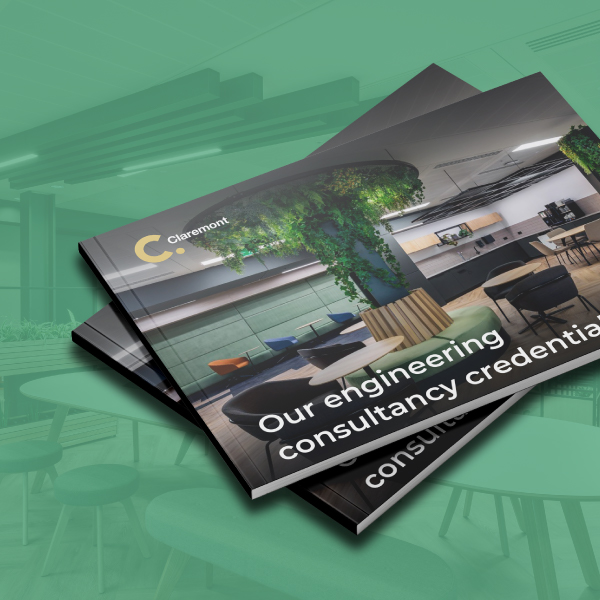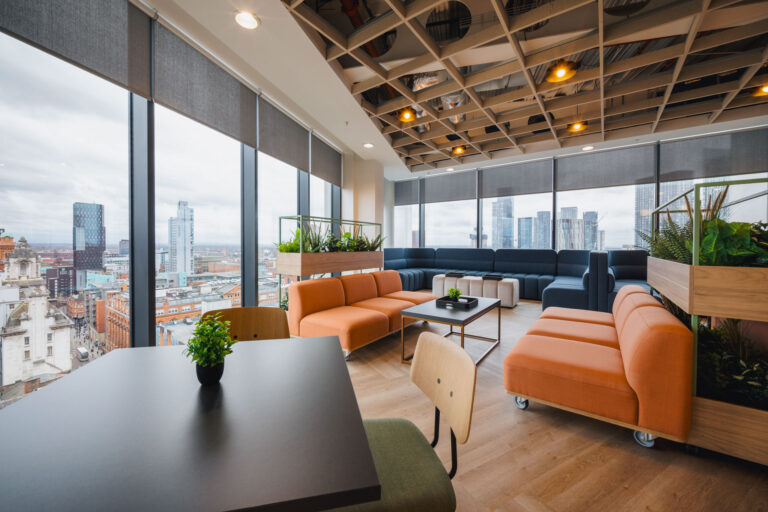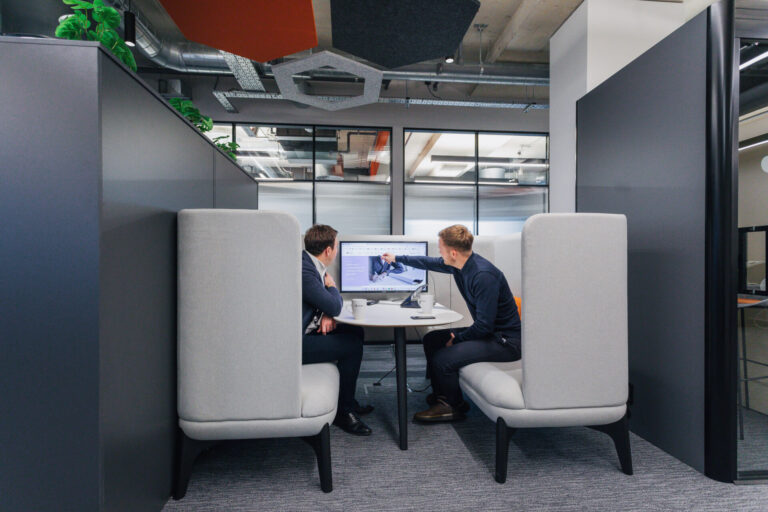
What is hybrid office design?
Date
17 February 2025
Read length
5 min
Almost half of UK employees (46%, to be exact) work in some form of a hybrid working model. Whether that be 1, 2 or 3 days from home, it seems as though hybrid working is here to stay.
Since the COVID-19 pandemic, the way many of us work has changed, and this has been reflected in employee preferences. 41% of UK workers prefer a hybrid working model, which makes it the UK’s most popular working model.
The idea of an office and what is expected of one has changed drastically over the last 50 years or so. From cubicle culture and open-plan spaces, to rigid structures and agile working, we’re arguably seeing the biggest-ever shift in office practices. We have seen a gradual change from a traditional office set-up, where employees clocked in from 9-5 and stayed in one place, to that of a hybrid office design model, where working habits are significantly more flexible. This cultural evolution impacts more than employee working patterns: it completely changes how we design offices.
Office design for hybrid working is different, and there are various considerations. In this blog post, we’ll detail all that you need to know about the hybrid office…
What is hybrid office design?
Technically speaking, a hybrid office design can be defined as a style of office design that seamlessly integrates face-to-face collaboration with the added function of remote working and communication.
A hybrid office design layout is slightly different from an agile workspace. Agile working creates dynamic spaces for employees, but without necessarily bridging the gap between home working and the physical office space.
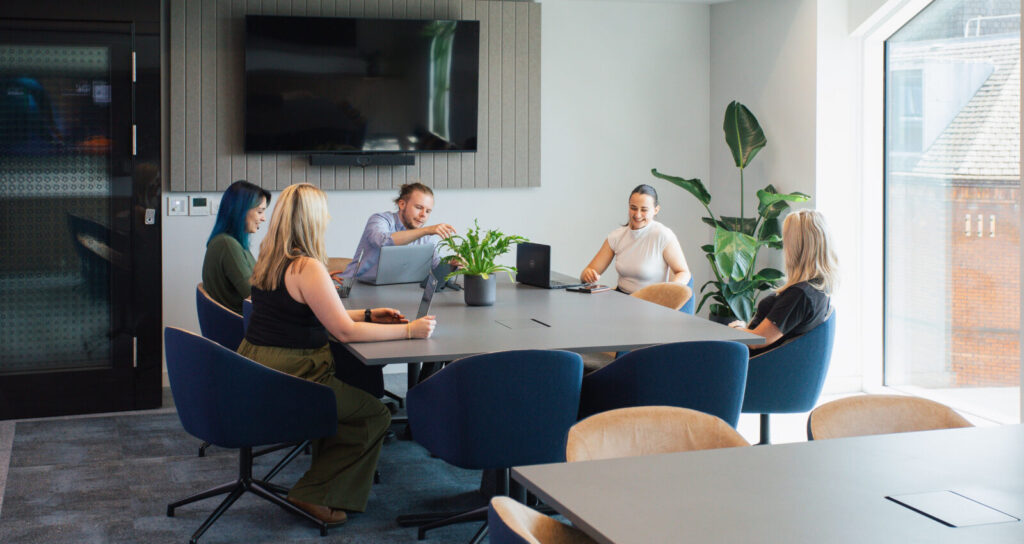
The idea of the hybrid office is by no means something new, but since the COVID-19 pandemic hybrid offices have become all the more popular. The idea of what a hybrid office should be has become more and more defined. It has completely changed the dynamic between employees in the office and employees working remotely.
A hybrid office design may require some unique solutions, some of which may include:
- Technology which to enables remote working.
- Incorporating technology that encourages easy booking of rooms and private working spaces.
- Encouraging teamwork through collaborative spaces.
- Configurable office furniture that can be easily manoeuvred for ad hoc meetings with remote workers.
Do hybrid offices work?
Although hybrid offices have been around for decades, there are some who question the effectiveness of this working model. While some people are sceptical about the functionality and productivity of hybrid offices, it may surprise you to know that not only do hybrid office spaces work, but at times they have proven to be significantly more effective than normal office spaces.
From improving productivity levels to enhancing employee wellness and reducing our carbon footprints, hybrid offices seem to be going from strength to strength. This has been reflected in the results of numerous studies. The International Workplace Group have highlighted some of the hybrid offices’ successes compared to previous working paradigms:
- 74% of hybrid workers advised they were productive in a hybrid environment.
- 85% of employees advised they had increased job satisfaction.
- 75% of bosses reported improved productivity
How to design a hybrid office
Designing your office in a way that fits the hybrid working model might seem obvious at first glance. However, if certain touchpoints aren’t met then the design can quickly fall apart.
Hybrid office design must draw upon some distinct features. These include:
Be flexible and adaptable
Being flexible and adaptable is one of the quintessential components of the hybrid office. Spaces need to be flexible. As such, you may expect to see pods, booths and acoustic screens instead of constructed panels and enclosed spaces. Moveable furniture and technology (such as digital screens) are almost essential.
For collaborative work, spacing and partitions can be used to provide more audio and visual privacy while still enabling an element of collaboration.
Foster a sense of belonging
One of the most commonly cited problems with hybrid working models is that there is a disconnect between remote workers and employees in the office. As such, you need to foster a sense of belonging through your office design.
Some say that having your own personal workspace is vital to establishing a sense of belonging. Having your own designated workspace is also vital to ensuring a sense of belonging. However, before you entirely ban hot-desking, some experts have advised that workers who don’t have a specific workspace should instead share desks with neighbourhood desks or team pods. This way, they will still have a home base in the workplace. They should also be given lockers or team shelving. Such considerations will make them feel as though they are here to stay and not merely visitors. There are many other ways to satisfy the longing for connection too.
Technology at the forefront

Hybrid offices thrive on technology. Without functional and appropriate technology, office and remote workers’ communication channels will be adversely affected. As such, hybrid offices must be willing to put technological advancements at the top of their priority list.
Depending on the organisation and the current office infrastructure, there may be a need for newer and more advanced video conferencing technology, virtual notice boards, acoustic screens and improved and clear microphones.
Cover all modes of working
A hybrid workspace should offer a variety of spaces to support different tasks, such as private booths for one-on-one meetings, desks for focused work, and meeting rooms for team collaboration. This flexibility allows employees to choose the best setup for their needs, including virtual meetings with remote colleagues.
Creating such an environment doesn’t require major renovations; you can use movable products like acoustic screens and whiteboards to define collaboration areas, and pods or booths for private work. Opt for pods and booths with lockable casters that are easy to move and reassemble, allowing you to adjust the workspace as needed without the hassle of building or tearing down walls and wholesale renovations.
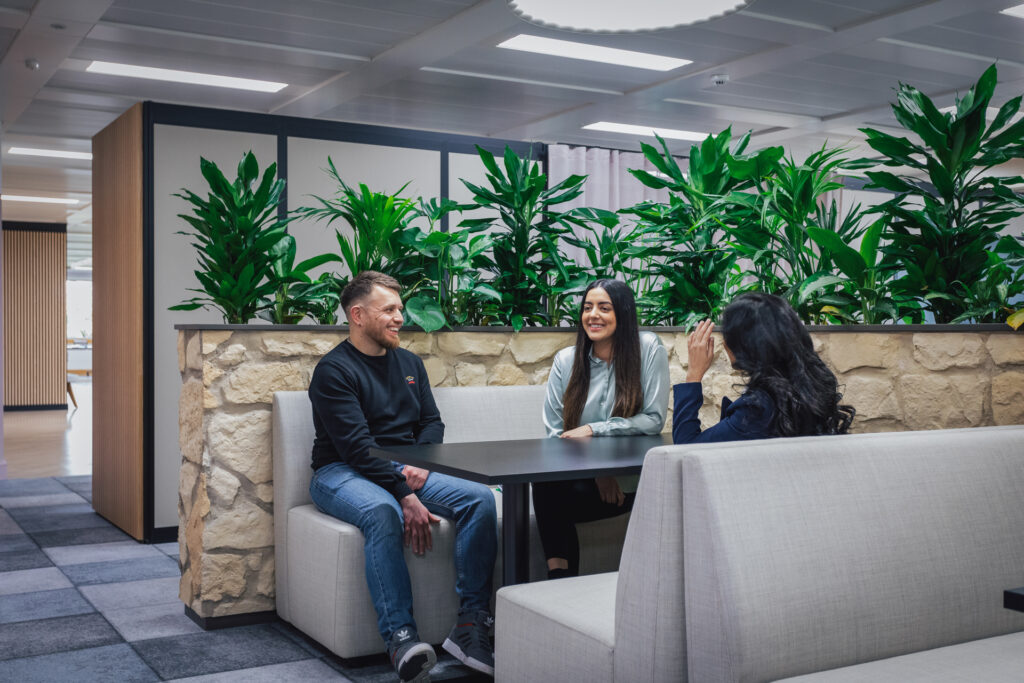
Start your Destination Office transformation
Ready to reshape your office into a space fit for hybrid working? Contact us and we’ll help transform and evolve your hybrid working visions into reality. Our expert team can help you make the most of your space, ensuring the best experience for your employees as well as higher levels of productivity.
See how we could help with your new office interior design or office design and build project here
Get in touch
We love nothing better than talking all things workplace and design – got a question, potential project or just need some guidance?
Drop us a note…


